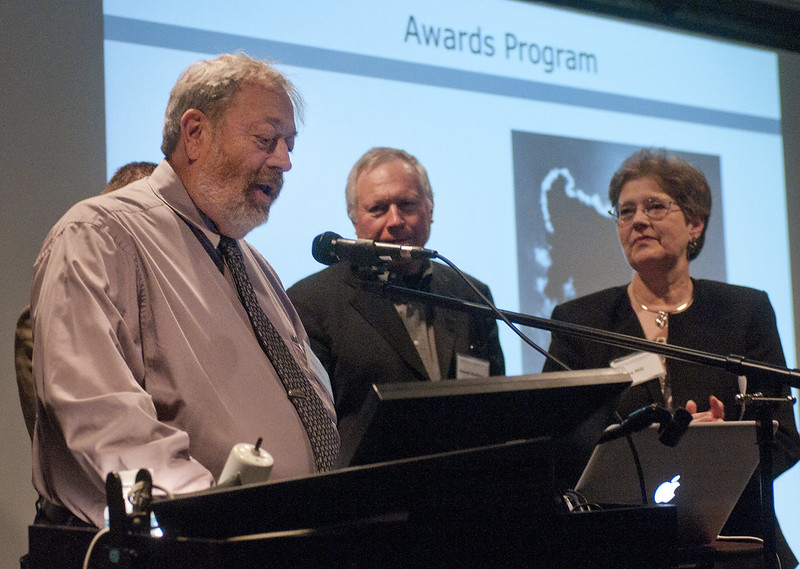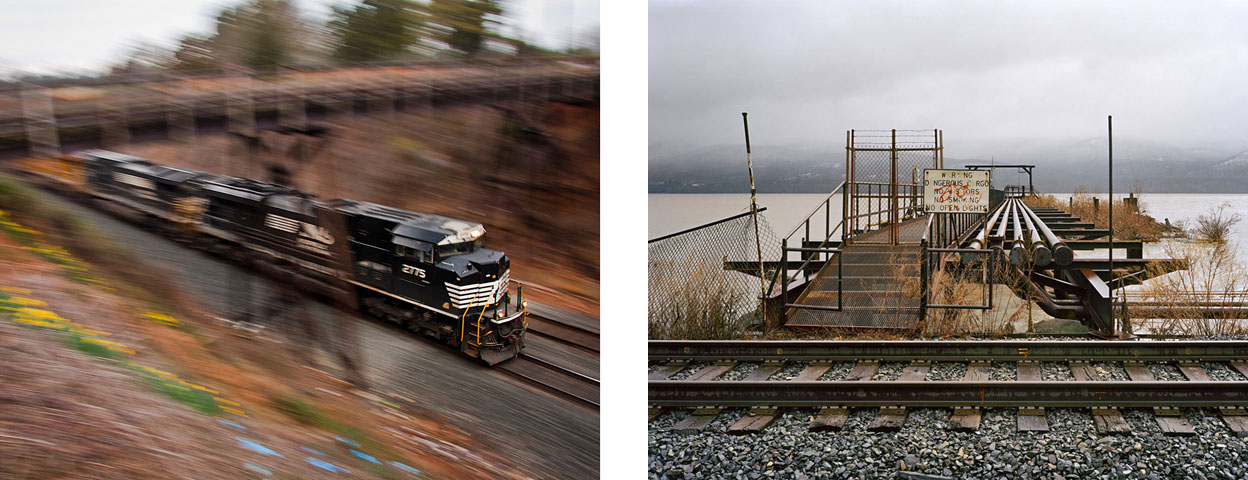He said, “I thank the directors and members for their enthusiastic support through the years, and am confident the Center will continue to prosper under its new leadership. I will be taking advantage of the opportunity to continue writing and photography projects and books, which have been delayed during my years at the Center.”
Mel Patrick, a renowned railroad photographer and long-time Center member, speaks for many with these remarks, “In my mind, John is one of three people who I identify as having brought ‘class’ to the hobby that we share with such passion—the other two are Lucius Beebe and David Morgan. John has always been a quiet giant in our field, encouraging the new photographers as well as recognizing those who came before us. Well done, Mr. Gruber; we all stand in your shadow and are thankful for all that you have given us.”
Gruber, a native of Prairie du Sac, Wisconsin, graduated from the University of Wisconsin-Madison and spent much of his professional career in its publications department. He has been a freelance railroad photographer and writer since 1960, and he served as the editor of Vintage Rails magazine from 1995-99. He received a lifetime achievement award for photography in 1994 from the Railway & Locomotive Historical Society (R&LHS). Gruber is a founding member of the Center, having signed the incorporation papers in 1997. Since then he has served as its only president and editor of its journal, Railroad Heritage.
Thanks to an early partnership that Gruber helped forge with the Archives and Special Collections department of Lake Forest College’s Donnelley and Lee Library, the Center has become an important repository of railroad images. Its holdings include the photography of railroad watercolor artist Ted Rose and the photography of former Trains magazine editor Wallace W. Abbey, which Trains helped fund with its 2010 preservation award. Recent acquisitions include the collections of railroad photographers John F. Bjorklund, Hal Lewis, and Fred M. Springer.
Under Gruber’s leadership, the Center has grown to become a nationally significant arts and education nonprofit organization devoted to railroading in North America—the only such institution. Its programs serve the substantial community of railroad photographers—amateurs and professionals—on the North American continent. Its traveling exhibitions have appeared in railroad and art museums across the country, including the Haggerty Museum of Art at Marquette University, Milwaukee; the California State Railroad Museum, Sacramento; and Grand Central Terminal in New York City.
The Center has produced 31 issues of Railroad Heritage since Gruber launched the journal in 2000, including critically acclaimed special issues, Railroad History in a Nutshell and Railroad Preservation in a Nutshell. Recently, two Railroad Heritage articles have received the David P. Morgan Article Award from the R&LHS—the top prize for articles published on railroad history in any American publication.
Also under his leadership, every spring since 2003 the Center has hosted an annual conference, “Conversations about Photography.” It has grown from a one-day event with forty attendees to three days and 160 attendees. All but one has been on the campus of Lake Forest College, including the 2013 edition, which will be April 12-14.
Gruber also conceived and promoted the Center’s largest project to date: “Faces of Chicago’s Railroad Community: Photographs by Jack Delano,” an exhibition at the Chicago History Museum, April 4, 2014, to August 10, 2015. The project will bring Delano’s 1942-43 highly diverse American railroad story in pictures to one of the nation’s foremost public history museums. Gruber has played and will continue to play vital roles in research, writing, and publishing the catalog.
The Center’s board of directors will meet on February 27 to elect a new president. Executive director Scott Lothes, hired full-time in August 2011, will take over editorial duties of Railroad Heritage and continue to manage the organization’s day-to-day activities. Gruber sees a bright future for the Center, saying, “It has been rewarding to see the Center prosper and become the leading railroad visual arts organization in North America. The Center now has a well-qualified board and executive director to move it forward.”
 John Gruber (left) with vice president David Kahler and board member Nona Hill at the Center’s Conversations about Photography 2012 conference.
John Gruber (left) with vice president David Kahler and board member Nona Hill at the Center’s Conversations about Photography 2012 conference.









 Photograph by O. Winston Link and copyright W. Conway Link.
Photograph by O. Winston Link and copyright W. Conway Link.